- Accessibility
- Request a Call Back
- Quick Drop CV
- Submit Timesheet
- About Us
- For Candidates
- For Clients
- News & Views
- Events
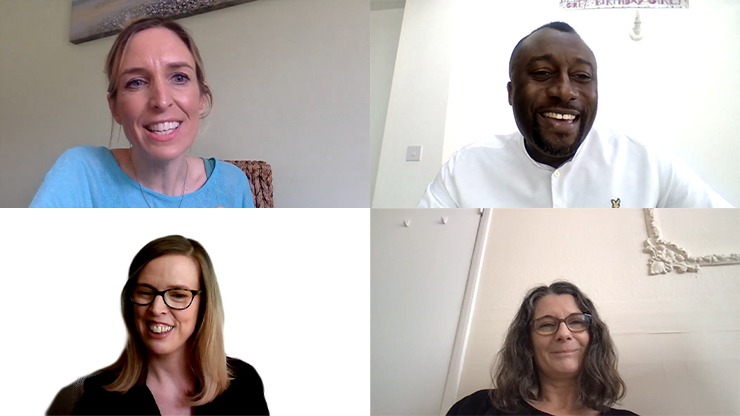
On 25th March 2021 Morgan Hunt hosted a webinar jobseeker wellbeing and resilience. We were joined by Alastair Smith-Agbaje (CEO of Lambeth & Southwark Mind), Dorothée Bonnigal-Katz (Frontline Clinician at Lambeth & Southwark Mind) and Suzanne Penny (Career Coach and L&D Expert. During the session we shared advice for jobseekers on how they can protect their mental health and remain resilient in their job search. Watch the full recording or read our summary below.
Covid-19 has significantly disrupted the UK job market. As most organisations prepared to meet the challenges of the pandemic, growth plans were halted. Normal hiring levels reduced significantly and restructuring in many organisations led to redundancy for many people. As a result, the competition for available roles has increased dramatically, and it is taking many jobseekers longer to secure work.
Although job markets are beginning to pick up, there are many who are still struggling with their job search. The effect of which cannot be underestimated. The experience of submitting applications for tens (sometimes hundreds) of jobs, attending interviews and facing rejection takes its toll on an individual’s wellbeing and ability to stay motivated.
As a jobseeker it is important to take care of your wellbeing and mental health so that you can continue to perform at your best. If you are showing up to interviews stressed, anxious and defeated, it’s more likely that it won’t go the way you hope. You’re far more likely to make mistakes and not communicate the value you can bring to your potential employer. So what can jobseekers do to ensure they don’t burn out?
As well as feeling stressed or anxious, you are likely feeling tired from your job search. When you feel this way, the best thing may be to take a short break. It is important not to put too much pressure on yourself and to listen to what your body is telling you it needs. However, if you decide to take a break, you should still retain some structure and routine to your days. This will help you to still feel productive and positive. It also ensures you don’t lose your momentum. Don’t forget to include healthy habits like exercising and socialising with others.
Dorothée Bonnigal-Katz, who is a frontline clinician for Lambeth & Southwark mind, highly recommends doing something creative as an antidote to stress and anxiety. Having a creative outlet puts you on the side of love and life, helping to enrich and bring positive emotions into your day.
Rejection takes its toll on us as individuals. It makes us question our self-worth and if we’ll ever make it. But it’s important not to dwell on these feelings.
If you were made redundant, remember that it is not a reflection of your skills and expertise. It was the role that was made redundant, not you, so have confidence on your ability. If you were rejected after an interview, know that you were invited to the interview for a reason. Someone saw something in your ability, which should give you confidence.
Viewing the interview as a learning experience can help change your perspective too. Focus on the elements of the rejection that you can control by using feedback to identify areas of growth and improvement.
If you have faced numerous rejection, you may want to take some time out to deal with the feelings of stress and anxiety, as well as build up your resilience again.
Resilience is a resource which we build up and is then drained through the challenges we face. When we feel our resilience is low, we know that we need to take the time to build it up again.
The origin of the word comes from Latin, meaning both rebounding and recoiling. Resilience is our ability to bounce back, but in order to do so we must recoil from time to time. To do this, take a break from the tasks that have been draining you. Remember and reflect on positive reinforcement you have received from others. This will be help you rebuild your sense of value and self-worth.
Negative thoughts, which come as a result of stress, have an impact on how we feel and behave. But improving your mood can be as simple as telling yourself positive stories and affirmations
After having many knockbacks and feeling like you’re not progressing, it can be difficult to remain positive and determined in your job search. To combat negative thoughts that might arise, try creating a mind map of testimonials and positive comments you have received. Refer back to this whenever you need a confidence boost.
Remember that although you have may have receive rejections, you have been invited to interviews because the hiring managers like what they see. With this in mind, try to relax in interviews and focus on emphasising the elements of your CV that your interviewer liked. And don’t forget to be prepared for your interviews. With preparation comes confidence.
Lastly, if you’re feeling anxious in an interview, view it is an opportunity to see if the organisation is a right fit for you. By changing your perspective, the interview becomes an opportunity for you to find the right fit for you. You’ll then feel enabled to have a relaxing conversation about what both you and the organisation bring to the table to determine if it’s a good fit.
By applying the tips above to stay positive and resilient in your search, your chances of getting the job will be improved as you’ll be able to bring your best self to your interviews. However, a positive mindset isn’t all you need to stand out in a competitive market. Here are some tips on how to improve your chances of getting the job:
Overall, it’s important to stay positive and hopeful. A negative mentality will not help you to achieve your goals. Pay attention to the areas that you can improve and listen to yourself if you feel like you need a break. Good luck!
If you’d like to speak to a recruiter for career guidance or help finding your next role, get in touch.
On 24th February 2021 Morgan Hunt hosted a webinar on the power of team coaching titled ‘Building inclusive teams for growth’. We were joined by team coaching experts Lucy Widdowson and Paul J Barbour, who shared how team coaching can be used to develop inclusive teams which benefit from increased performance.. Read the summary of the webinar below or watch the full recording at the bottom of this page:
Following the events of 2020, the importance of diversity and inclusion for organisations is being recognised more and more. Organisations are becoming actively engaged in building diverse and inclusive workplaces as a result of demands from staff for greater representation, but also due to the proven benefits for organisations. Benefits include:
It is clear that, for organisations, there is a lot to be gained, but how can improved diversity and inclusion be achieved? There are several factors that influence the diversity and inclusion of a workplace, but Lucy Widdowson and Paul J Barbour suggest developing more inclusive teams through team coaching is a good place to start.
When we talk about the diversity and inclusivity of teams, what do we mean? Diversity describes how team members are different from each other, improving the range of ideas and perspective brought to the table. Inclusivity, however, describes the style of interaction (the actions and strategies) that help people feel included, which is essential for effective teams and organisations. Diversity improves the variance of ideas, but inclusivity is what enables these thoughts to be shared.
The diversity of teams can be improved through recruitment, whereas inclusivity can only be built through a focus on the interpersonal relationships of teams. In order for team members to feel included, psychological safety and trust must exist within the group. Individuals must believe that the group is a safe place for interpersonal risk taking. Only then can members feel truly comfortable to contribute and share their ideas.
So how can inclusivity be improved? In the team coaching sessions that Lucy and Paul run with organisations throughout the world, they work with teams to develop empathy and to determine the shared purpose, values and beliefs of the group. Empathy leads to understanding and having shared goals ensures the group moves together in the same direction. One exercise they encourage people to use to build empathy is to watch the news, then try to understand a person who has an opposing view to you and think about what you would say to them.
“Coaching that helps teams work together, with others and within their wider environment, to create lasting change by developing safe trusting relationships, better ways of working and new thinking, so that they maximise their collective potential, purpose and performance goals”
Building psychological safety and trust can be achieved through a number of team coaching methods and exercises. Through their work, Lucy and Paul have defined 7 characteristics of high performing teams. These are:
For improving inclusivity, Lucy and Paul recommend focussing on the awareness and relatedness. Here are some exercises you can use to maximise these characteristics:
Paul and Lucy also suggest using scenarios to open honest conversations about how people would respond. Through this people can feel safe to share without judgement, as well as be corrected if their response could be improved. Here are some scenarios for you to use and discuss with your teams:
Amy in a team meeting uses an incorrect terminology for a colleague in another team saying ‘Jo the blind person’. What do you do?
Every time Amin makes a suggestion, another team member Tom ignores them and speaks over them. What do you do?
You have a culture of all going to lunch together when in the office or spending time chatting informally when working virtually at the end of the day on a Friday. Ray doesn’t join in. What do you do?
By applying some of the techniques, you can begin to create more trust within your teams which will improve communication and performance. If you would like to learn more about team coaching and how it can be used to develop high performing teams, Lucy and Paul recently published their first book titled “Building top performing teams”. You can purchase a copy via the links below.
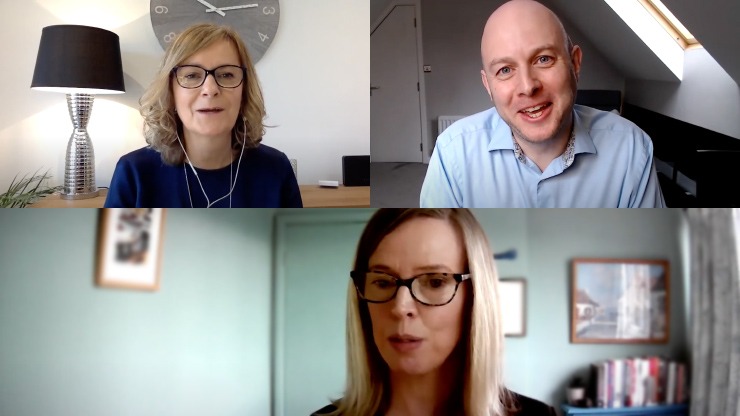
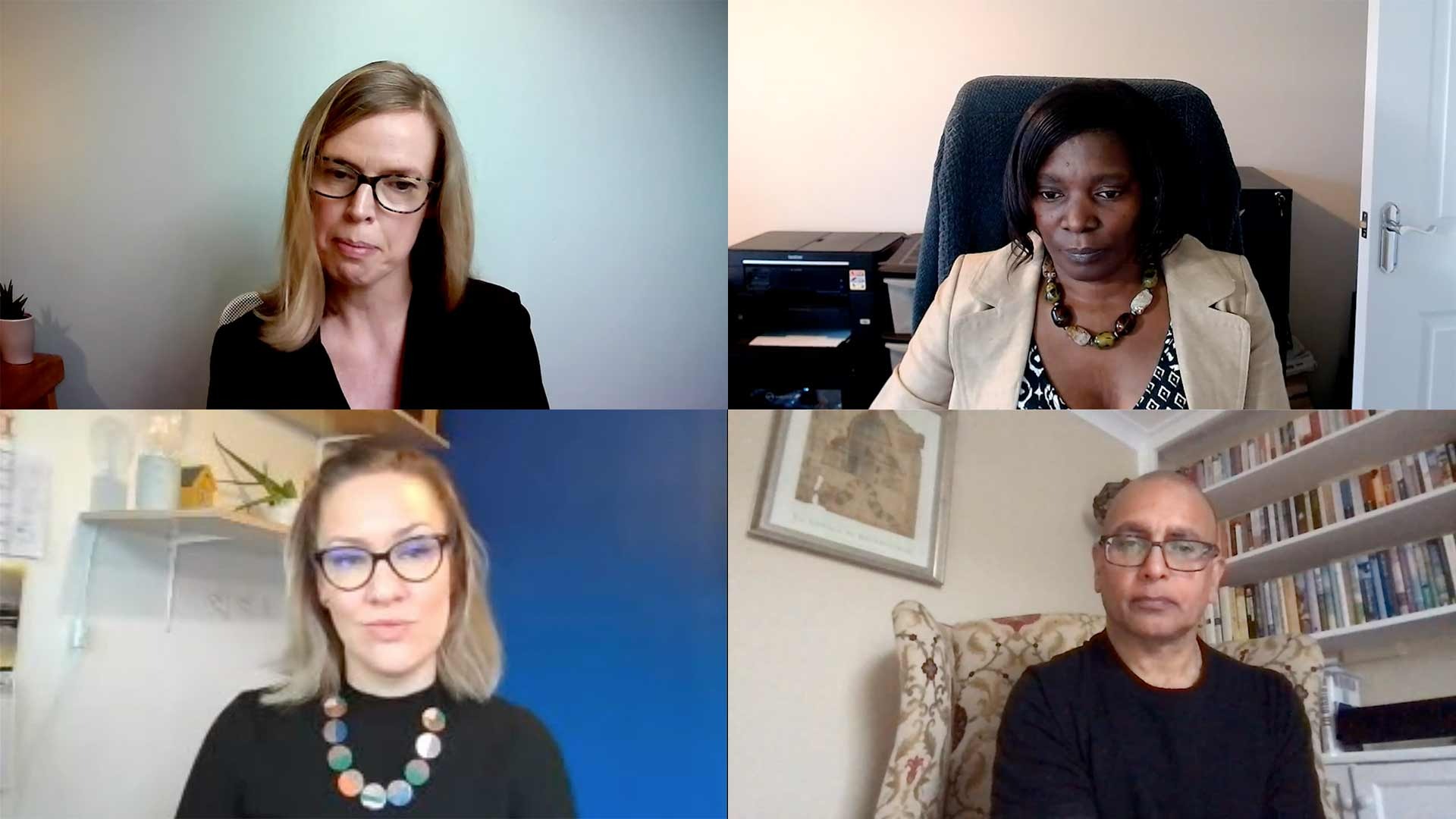
On 27th January 2021 Morgan Hunt delivered a webinar on diversity and inclusion titled 'Celebrating different perspectives - Why diversity matters'. We were joined by diversity and inclusion experts Carmen Morris, Amarjit Singh Basi and Hannah Manyewu to outline the benefits of diverse and inclusive workplaces, the challenges facing the implementation of D&I and how these challenges can be overcome. See a summary of the webinar below or watch the full recording at the bottom of this page:
Diversity and inclusion have been at the forefront of many people's and organisation's minds since the events of 2020. The Black Lives Matter movement shone a light on the importance of equality for all people in all areas of life. The need to be treated equally is vital within the workplace, as it's a place where people spend most of their days and lives.
In our webinar, our speakers outlined that there are many benefits to be gained from creating diverse and inclusive workplaces. Fostering these kinds of professional environments helps people feel more comfortable. As a result, they are more engaged in their work and with the people around them. Collaboration improves, as does their productivity and effectiveness. As a whole, job satisfaction increases, barriers that in the past made work difficult are reduced and the performance of all employees is boosted.
It's hard to argue against improving the wellbeing of your employees, but there are many benefits to organisations too. Improved employee effectiveness and productivity improves the overall performance of the business. Many studies have shown there is a strong positive correlation between diversity and inclusion and business success. Beyond this, D&I practices foster strong and supportive cultures that people want to work in. It makes retaining talent and attracting skilled people to your organisation much easier.
But how do you begin improving diversity and inclusion? It has to start with senior leadership and management. Boards must authentically buy into the need to improve and understand the challenges that the least privileged people in their organisations face. This requires leaders and managers in an organisation to speak to the people affected and take the time to hear about their lived experiences, the barriers they face and any areas of improvement they have identified.
But the role of leadership doesn't stop there. Next, they must put what they have learnt to action. Improving diversity and inclusion is about creating a change in culture which must be driven from the top down to be authentic. Representing marginalised groups within management is an important step that ensures all perspectives are heard and considered.
Leaders and management aren't alone though. Setting the culture requires buy in and support from all functions of the business. Management must take ownership of this process and invest in the development of staff at all levels. Through this, employees throughout the organisation will gain the knowledge and understanding to make this change in culture effective and, most importantly, permanent.
In the past year we have seen an increase in the number of diversity and inclusion job roles. The creation of positions with this specific focus signals a promising commitment to improvement, however it is important that these appointments are not just tokenistic. These job roles must be thought out and organisations should at least have some understanding of their areas of improvement or what they want to achieve. Otherwise, businesses risk destroying any credibility they have in wanting to promote diversity and inclusion.
For people in these roles, there are a number of factors that will determine their success. Most importantly you should have a direct line of communication to the board or senior leadership team. If this doesn't exist, it is unlikely your role will have the impact that is needed to create change within the organisation. D&I advocate Hannah Manyewu suggests that your definition of success should be based on achieving results through others. Your aim should be to mobilise internal groups across all functions, build momentum and interest in improving D&I and ultimately hold leadership accountable.
Recruitment is also critical in creating diverse and inclusive workplaces. Hiring people from different backgrounds shows a commitment to improving the diversity of the workforce and brings in new perspectives and ideas which can help an organisation thrive. To practice inclusive recruitment, businesses should understand their employer brand and how it is perceived by potential applicants. Through this you gain insight into how you may have to improve how you communicate your employer value proposition to appeal to a diverse range of applicants. Fair and unbiased recruitment methods such as psychometric testing and blind application reviews are also useful tools to make the hiring process as inclusive as possible.
Since last year we have seen a lot of progress, but it is just the beginning. It is important to acknowledge that change doesn't happen overnight, but organisations must begin taking the steps to create more diverse and inclusive environments. Our speakers Carmen, Amarjit and Hannah hope that in the next year we will continue to see more leadership and executive roles filled by people with diverse characteristics, increased publicly visible commitment to the cause and real accountability to change through evidence and case studies.
Find out how you can improve internal diversity and create inclusive workplaces. Contact Clare Keniry, Head of Diversity & Inclusion at Morgan Hunt – clare.kenriy@morganhunt.com.
Children and young people across the UK have had their lives turned upside down by the coronavirus pandemic. Almost every young person has had to adjust to dramatic changes in their education or employment, routine and home life. So it's important that as individuals and organisations we understand those challenges. And even more so important that we know how to support young people through them.
On October 13th Morgan Hunt hosted the webinar 'Youth Mental Health during Covid-19: How to support under 25s', helping to increase awareness of this issue and provide a learning opportunity for attendees. The online session was hosted by Clare Keniry, Technology Recruitment Director at Morgan Hunt. We were joined by guest speakers David Beeney and Jack Parsons.
David is the Founder of Breaking the Silence. He has established himself as one of leading advisers in the UK on how to drive employee engagement through an effective wellbeing programme.
In 2018, David was proud to have been listed in the top 101 influencers globally on employee engagement, he is also a qualified Mental Health Counsellor affiliated to the BACP (British Association of Counsellors and Practitioners) and a Trustee for mind.
He specialises in creating cultures of trust that are free from the stigma of mental health that are all inclusive.
Jack Parsons is an award-winning young entrepreneur, public speaker and subject expert on Youth and is publicly known as the UK’s Chief Youth Officer.
Jack has been honoured awards over the last 3 years including Young Digital Leader Of The Year, The 100 Faces of a Vibrant Economy, Most Connected Young Entrepreneur, 50 Top kindest leaders and Top 10 UK Young Entrepreneurs to Watch.
Jack's personal mission is to knock down doors for others to walk through after having a tough upbringing and lack of career support from the school, learning from failure and being motivated to make a real impact for young people.
Jack is currently the CEO of The Youth Group which is building the world’s largest most connected marketplace and community for young people with one aim: to help improve the odds for young people across the Commonwealth to achieve their full potential in work.
In addition to running The Youth Group Jack advises a number of organisations and figure heads on young people, including governments.
Young people are just as concerned about their futures as they are about their current situation
Individuals and organisations need to lead the way in normalising and encouraging conversations around mental health
Cultures need to be created where young people feel comfortable being themselves
Look for any change of behaviour in young people you know as this might signify that they're struggling with their mental health
To initiate a conversation, ask genuinley how they are doing. Asking how someone is feeling out of 10 makes it easier for the person to give a clear idea of how they are.
Sharing your own struggles and vulnerabilities gives others permission and comfort to share theirs
Plan to have others with specific expertise around when a conversation about somone's mental health becomes more serious. Saying the wrong thing in this situation could be dangerous
You can watch a recording of the full webinar below.
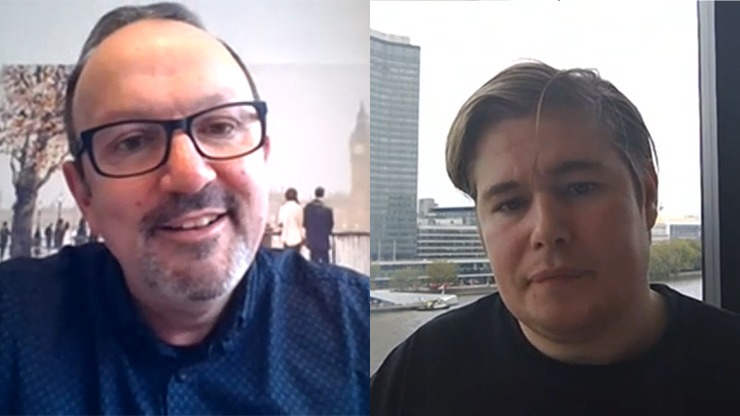
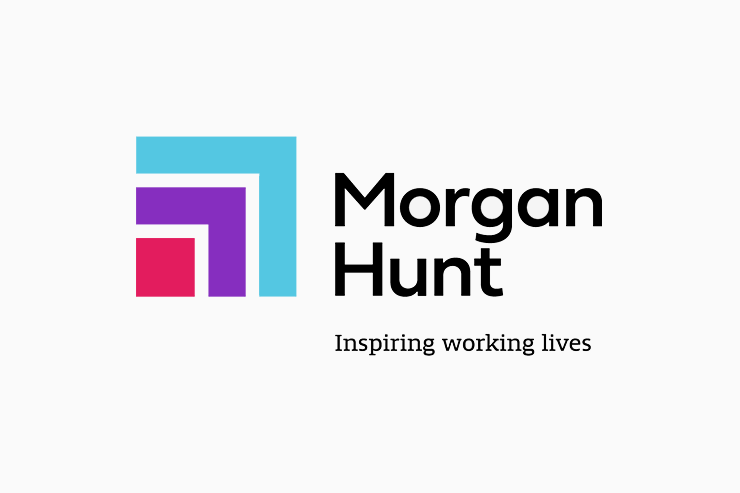
Today Morgan Hunt unveils its new branding and website. The new brand replaces a visual identity that has been the face of the company for over 15 years. The new brand reflects who we are as a business, the people within it and how we work today.
Our new website brings with it a fresh, easy-to-use interface and new features, which gives candidates the tools to find the right job and for clients to find out about the full suite of solutions that Morgan Hunt offer.
A lot has changed over the last 15 years, that rate of change has particularly intensified over the last 7 months. The modern and inclusive imagery reflects Morgan Hunt’s standing within its markets. It positions the business as the recruitment partner supporting jobseekers that look for a sense of purpose in the work they do. We connect them with organisations that can give them purpose and help them realise their potential, in an environment that reflects their values and allows them to make a difference.
The website augments this message, enabling us to share our story and our services in an engaging way. The site is modern and bright, but most importantly it provides important information to job seekers and employers, as well as a powerful job search function to help our customers find the most relevant and suitable job vacancies for them.
Having a person’s profession as the main search category supports our belief that many skills within the public, private and not for profit sectors are transferable. We trust this will encourage people to explore opportunities that they might not normally consider, whilst making it easy for jobseekers to find the jobs they are familiar with.
The rebrand brings with it a huge visual change. This includes a new logo, colour scheme and visual language.
Our new logo acknowledges our heritage in its design as it is a modernised take on our previous mark. The upward pointing lines represent how we have changed, but the familiar square element symbolises that the family values that the organisation was built upon are still present. The outer lines create an arrow but can also be interpreted as ripples. These signify a strive towards progress, innovation and creating positive change for our clients, customers and the wider community.
The change goes much further than just the visuals. We truly believe that when we place someone in a job where they add value and have purpose, their role is more fulfilling. The needs of our candidates and clients are the most important thing to us and we aim to provide both with solutions that inspire them and enable them to inspire others around them too. We are proud to help organisations find the talent they need to grow and make a difference. And we are privileged to help talented individuals make a difference and build meaningful careers.
Managing Director, Dan Taylor commented,
“Our new brand authentically communicates the business we are today. It is bright and bold and reflects the passion that our people have for making a positive difference in their work, in supplying organisations with expert staff to help them achieve their goals”.
If you’d like to find out more how we can support you as a jobseeker looking for your next role, or as an organisation seeking the right talent, please email us at info@morganhunt.com.
Remote working and hyrbid working is here to stay. Covid-19 has changed the nature of work forever and people now want, and expect, more flexibility from their job to manage the other elements of their life better. So if you want to attract and hire the best talent, excluding remote workers isn't an option.
With this change comes increased expectations of employers. Remote employees starting at your organisation expect to get an onboarding that is equally as good as one done in person. Why should they miss out on this just because they work from home?
The positive news is that they don't have to accept an inferior onboarding process. Providing a meaningful onboarding that prepares them to their job and integrates the new starter into the organisation can be done remotely. Here's how.
Use online electronic signature software such as DocuSign, allowing new employees to sign and return key documents securely with an encrypted audit trail. Work with your HR team to adapt your standard compliance process for onboarding.
Be aware of the worries your new member of staff may have handing in their notice in such a challenging and uncertain market. It is critical to support them and keep in regular contact during this period. These are uncertain times so it is critical that you engage with and keep in regular contact with your new hire over the course of their notice period – we are seeing candidates accept counter offers from their current employer at the last moment. So, it is crucial to keep this in mind and ensure that you start involving them in team calls even during their notice period. Really utilise any opportunity to interact and encourage them to engage with the team culture during this period.
Encourage as much face time as possible with their new team, any opportunity for interaction is important, for example including them into a group chat on WhatsApp, Skype etc. This will introduce them and engage them in the team culture. Your key goal before and during onboarding is to over communicate.
Ensure that they have all they need to carry out their duties on day one including any computer equipment and the necessary logins. If there is any means of providing them with organisation/ corporate literature remotely, all the better. Ensure they have remote access to all relevant company documents and files. Think about sending a small ‘care package’ as a welcome gift.
One to one meetings are important so that new members of staff have an opportunity to communicate with you and other key team members privately, as well as in a group/ team setting. Remember to encourage social get togethers as well, such as using video platforms for a team coffee or drink in order to encourage social interaction.
It allows you and/ or another team member to enthusiastically welcome the new employee to the organisation, discuss the team and how they will be able to carry out their role remotely. Include members of the senior management in this welcome video.
Pretty much every part of the standard induction process in week one can be moved to a virtual process. All training can be delivered online and it is likely that you already have training modules around compliance or health & safety etc. that are delivered via online training. Work with your internal training team or training providers to enhance your virtual offering for new starters.
Organise a team wide meet and greet session as a group call and then arrange individual one on ones with key team members so that the new hire is both introduced again to the team but also has an opportunity to start building key internal relationships.
Think about all the key stakeholders that your new hire needs to meet and arrange these as video calls. The more structured you can make this in the first few weeks the better – this will assist your new hire to understand their role and duties more quickly.
Ask your new starter to keep a list of key questions they might have and then ensure that they have a platform to start to work though these queries, for example a daily video call with their line manager.
Clearly, working day to day in an office allows these questions would be answered naturally, so it is key that they start with the habit of noting questions as they work so these can be addressed on a regular/ daily basis.
Check in regularly but don’t keep checking up. By setting clear daily expectations and then following up, you or the line manager will be able to naturally track progress and development. Ask for help and perhaps a HR colleague can support you by organising a monthly catch up call with the new hire.
This will give an extra insight and assist you in keeping an eye on their overall wellbeing.
This is a stressful period for everyone, and a new hire will perhaps be feeling extra pressure to prove themselves in a new organisation.
Remote onboarding is a relatively new process for most organisations, so naturally there will be a few issues and perhaps challenges early on. So, it is important that all parties involved are understanding and willing to learn from mistakes. Have this conversation with your new hire early on – ask them to be forging but also ensure that you gather feedback and work to learn from any early mistakes.
If you would like more information about any aspects of remote recruitment or remote onboarding, please get in touch.
